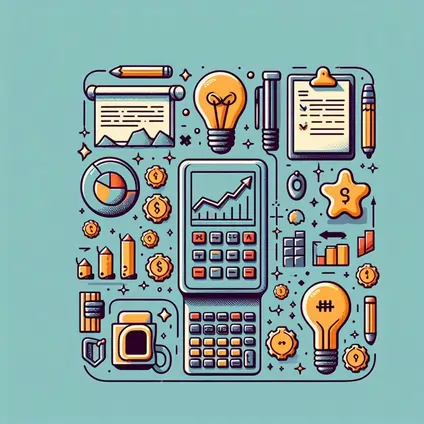Preparing Effectively for Microeconomics Exams Focused on Elasticity and Output Analysis

Microeconomics exams can be a real test of skill—not just knowledge. Unlike exams that rely on pure memorization, these assessments challenge your ability to apply economic theories in real-world scenarios, interpret graphs, solve numerical problems, and make quick, logical decisions under time pressure. Whether you're preparing for a high school exam or tackling university-level microeconomics, you're likely to face a blend of theoretical concepts and data-driven questions. The exam you provided is a prime example of today’s exam trends: a strong emphasis on application over memorization. Topics like price elasticity, total revenue, and production theory aren’t just tested in isolation—they’re blended into multiple-choice formats, tables, and problem-solving tasks. That’s where having a solid preparation strategy becomes your biggest advantage. In this blog, we’ll be your Economics Exam Helper, guiding you through essential topics, smart study techniques, and effective in-exam strategies. If you're looking for Online Exam Help that truly prepares you for practical economics assessments, you're in the right place. Let’s dive in and set you up for exam success!
Mastering Key Microeconomic Concepts

Before you even think about exam strategies, you need to ensure your understanding of the core concepts is solid. Microeconomics has some foundational ideas that frequently appear in assessments, and the better you understand them, the more confident you’ll feel tackling any question.
Understanding Price Elasticity of Demand
One of the pillars of microeconomic theory, price elasticity of demand (PED), tells us how sensitive consumers are to price changes. This concept is frequently tested because it's not only theoretical but also deeply practical.
To prepare effectively:
- Learn the formula: . Practice using it with real numbers and data from graphs or tables.
- Understand the types of elasticity:
- Elastic (PED > 1): Consumers are very responsive to price changes.
- Inelastic (PED < 1): Consumers are less responsive to price changes.
- Unitary elastic (PED = 1): Revenue remains unchanged when price changes.
- Know the implications: In an inelastic market, firms can raise prices without drastically losing sales, which is crucial for revenue.
Exams may present a graph (like the one in your exam) and ask you to calculate or interpret PED over a specific range. Others may describe scenarios and ask you to infer elasticity indirectly.
Linking Revenue and Elasticity
Understanding the relationship between price elasticity and total revenue is vital for interpreting market behavior and making predictions.
Here's how it works:
- When demand is elastic, a price increase causes total revenue to fall.
- When demand is inelastic, a price increase causes total revenue to rise.
- If demand is unit elastic, total revenue remains unchanged.
To excel in this area:
- Memorize the Total Revenue Test.
- Practice with real-world scenarios: What happens to a company’s revenue if they increase the price of a necessity (like fuel) vs. a luxury good (like designer bags)?
- Review past exam questions where elasticity is used to make policy or business decisions.
In exams, these concepts often appear in MCQs asking you to evaluate statements like “If a firm raises prices and its revenue increases, the demand for its product is...” Your ability to interpret these relationships can gain you easy marks.
Analyzing Production Functions
Production theory questions often use tables or scenarios involving units of labor and outputs. These require not only conceptual understanding but also quick mathematical calculations.
Key definitions:
- Total Product (TP): The total output from all units of input.
- Average Product (AP): TP divided by the number of inputs (usually labor).
- Marginal Product (MP): The additional output generated by employing one more unit of input.
To prepare:
- Practice calculating AP and MP from TP data. Use Excel or a calculator initially, but then try doing it manually.
- Understand diminishing returns: Initially, adding more labor increases output significantly, but beyond a point, each additional worker contributes less.
- Work with different scenarios: What happens when labor increases but capital remains fixed?
In exams, you're often asked to fill in missing values in a table, interpret trends, or explain why MP is falling despite rising TP.
Effective Study Strategies for Application-Based Economics Exams
With the content understood, it’s time to talk about preparation methods. These aren’t exams you can cram for the night before. Instead, you need a systematic, practical approach to study.
Building Conceptual Foundations
Strong foundations are your greatest asset. Many students skim over the theory and jump straight to past papers, but this backfires when questions twist basic ideas in unfamiliar ways.
Instead:
- Create concept maps: Link elasticity to revenue, to pricing decisions, to consumer behavior. Seeing the web of connections strengthens understanding.
- Use real-life examples: Think about products you use. How would demand change if prices rose? What does this say about their elasticity?
- Use active recall: Quiz yourself on definitions and their implications rather than just reading notes.
- Teach someone else: Explaining a concept in simple terms is the best way to ensure you really understand it.
Practicing Numerical and Graph-Based Questions
Exams like the one in your PDF rely heavily on application. Whether it’s reading a graph or calculating elasticity, you need to be fluent in using numbers and visuals to extract meaning.
Here’s how to practice:
- Solve past paper questions under untimed conditions first, focusing on accuracy.
- Then add the pressure of time, mimicking the real exam.
- For graphs: Identify axes, interpret slopes, and look for areas (like total revenue = price x quantity).
- For tables: Practice spotting patterns and calculating missing entries quickly.
Also, compile a formula sheet and review it daily. Make sure you know when to apply each equation and what each variable represents.
In-Exam Techniques to Handle Microeconomic Questions
Even with perfect prep, how you perform in the exam hall determines your score. Knowing the content is step one; applying it strategically under pressure is step two.
Tackling Multiple Choice Questions with Precision
MCQs seem easy, but they are often packed with traps. Many require subtle reasoning and quick calculations.
To master MCQs:
- Read the stem (question) carefully. Focus on keywords like "inelastic," "fall," "price taker."
- Eliminate obviously wrong choices. Often, even if you're unsure of the right answer, you can rule out two.
- Use the process of deduction: What do you know? What contradicts the theory?
- Don’t overthink. Trust your first instinct if you’ve prepared well.
Also, be mindful of language tricks: words like "always" or "never" in options often signal incorrect answers.
Dealing with Tables, Graphs, and Calculations
These are the questions where you can pick up easy marks—or lose time.
Strategy:
- Skim the table or graph first. What is it showing? Price and quantity? Labor and output?
- Label your calculations. If it’s a fill-in-the-blank table, show how you got the value.
- Use scrap paper for calculations. Rewriting the formula each time can prevent silly errors.
- Double-check: Especially for marginal or average values, one small mistake can throw off multiple answers.
Familiarity is key. The more types of graphs you practice, the faster your brain will recognize patterns.
Time Management and Decision-Making
Poor time management can sabotage a well-prepared student. Here’s how to avoid that:
- Scan the paper first: Identify easier questions and start there.
- Budget time: If you have 20 questions in 60 minutes, that’s 3 minutes each. Keep an eye on the clock.
- Flag hard questions: Skip and return to them later. You’re not losing marks for unanswered questions.
- Reserve 5-7 minutes at the end to review flagged items and double-check calculations.
Also, stay calm. One tough question doesn’t define your score. Move forward and return to it if needed.
Final Tips and Common Pitfalls to Avoid
Let’s end with a rapid-fire checklist of what to do (and not do) as your exam approaches.
DO:
- Review core concepts every few days.
- Practice under exam conditions at least twice before the real test.
- Get feedback: Ask a teacher or peer to review your answers.
- Rest before the exam: A fresh brain solves problems better.
DON’T:
- Don’t memorize blindly. Understand why formulas work.
- Don’t skip topics just because they’re hard.
- Don’t panic if you encounter a weird graph or new table structure. Apply the same logic.
Finally, believe in your preparation. Microeconomics isn’t about knowing everything—it’s about understanding the right things and applying them wisely.